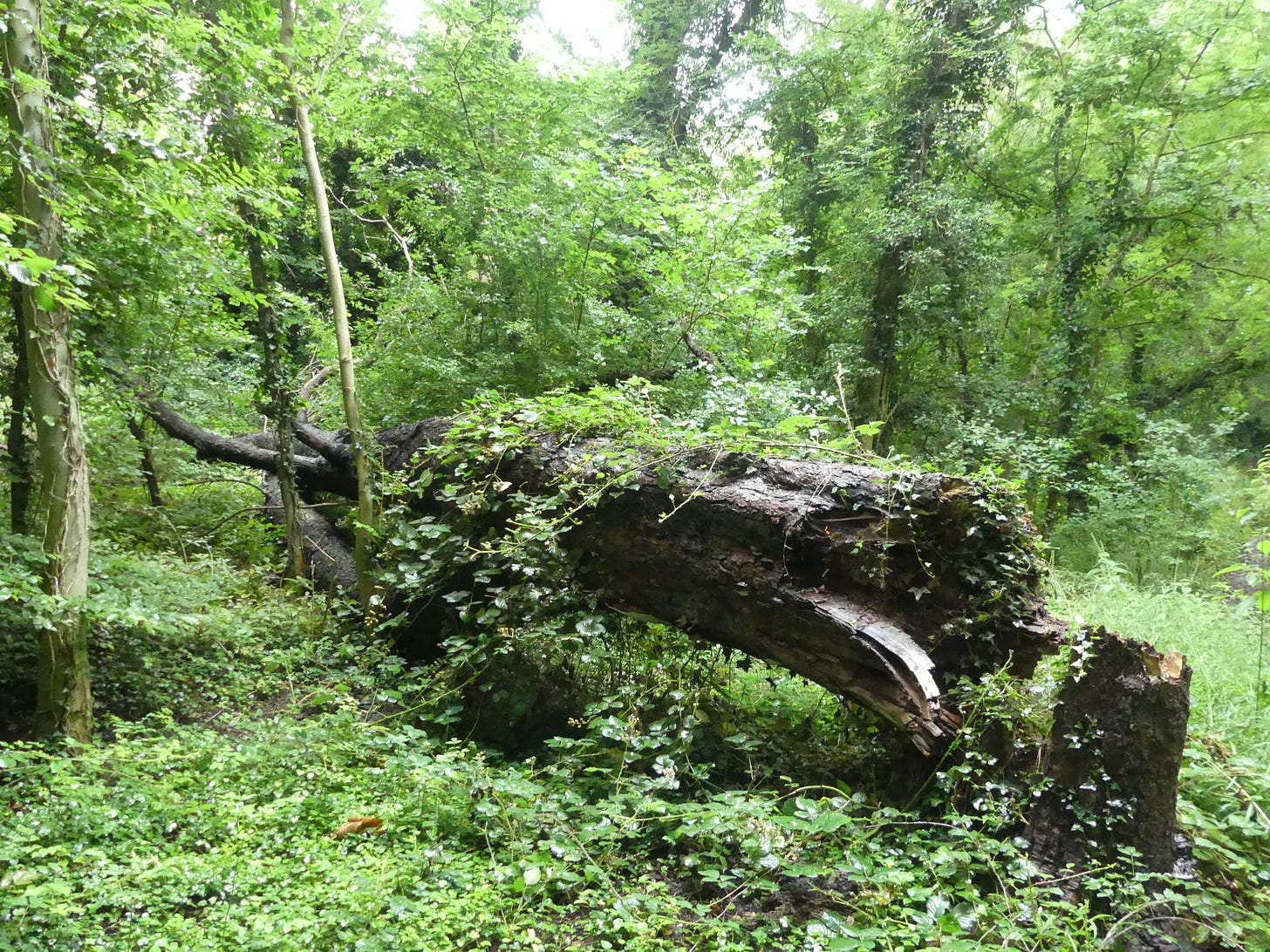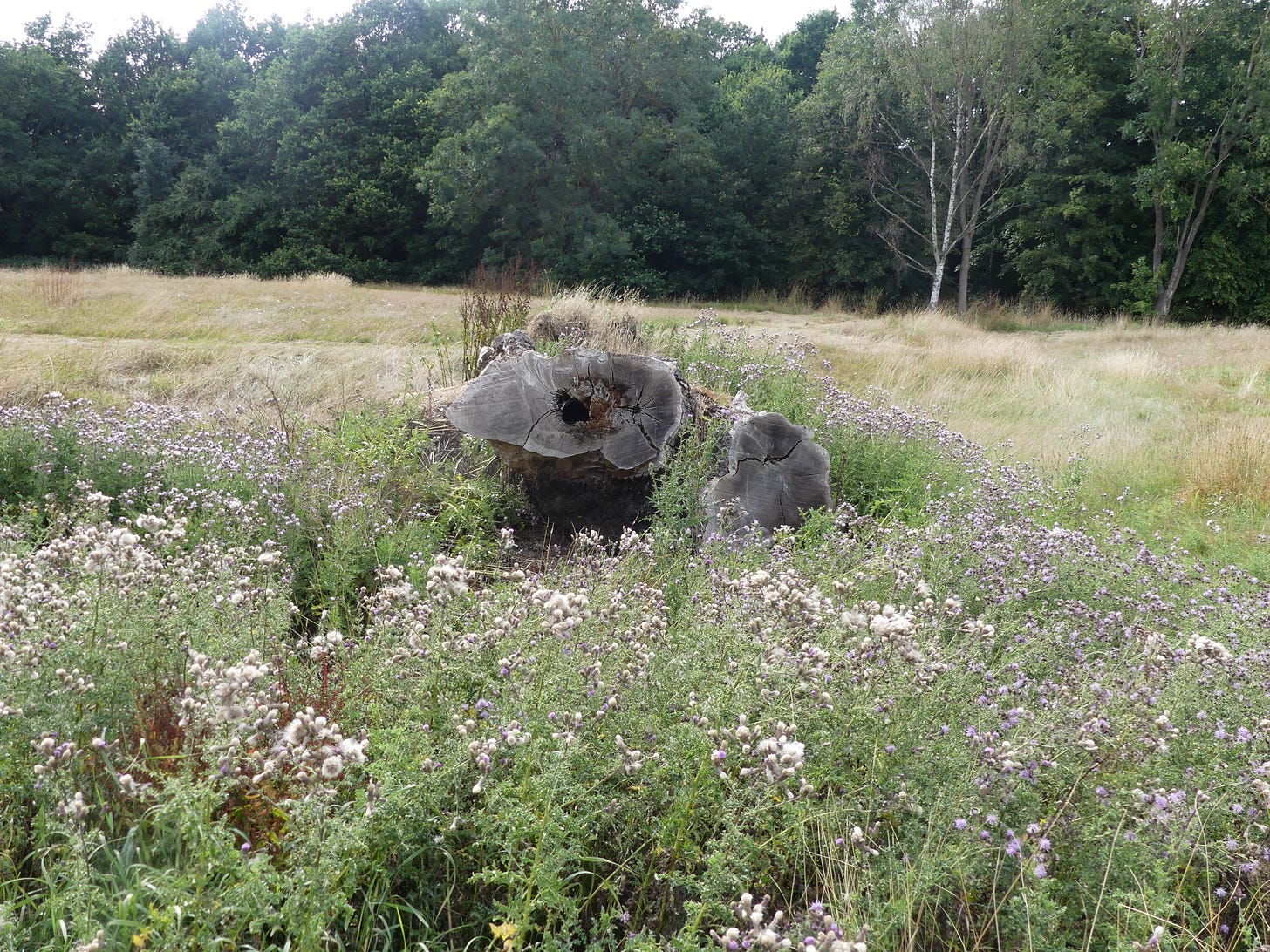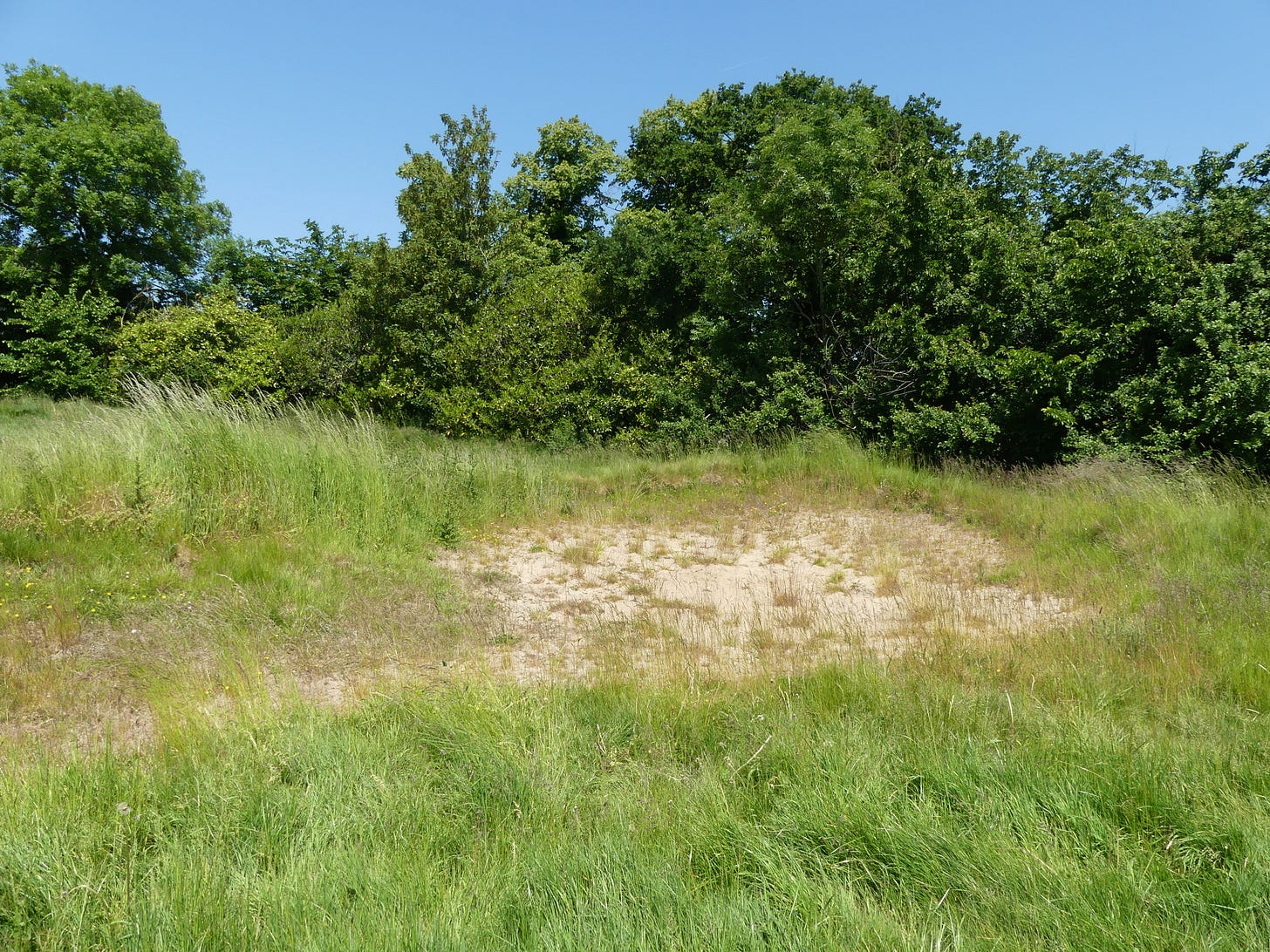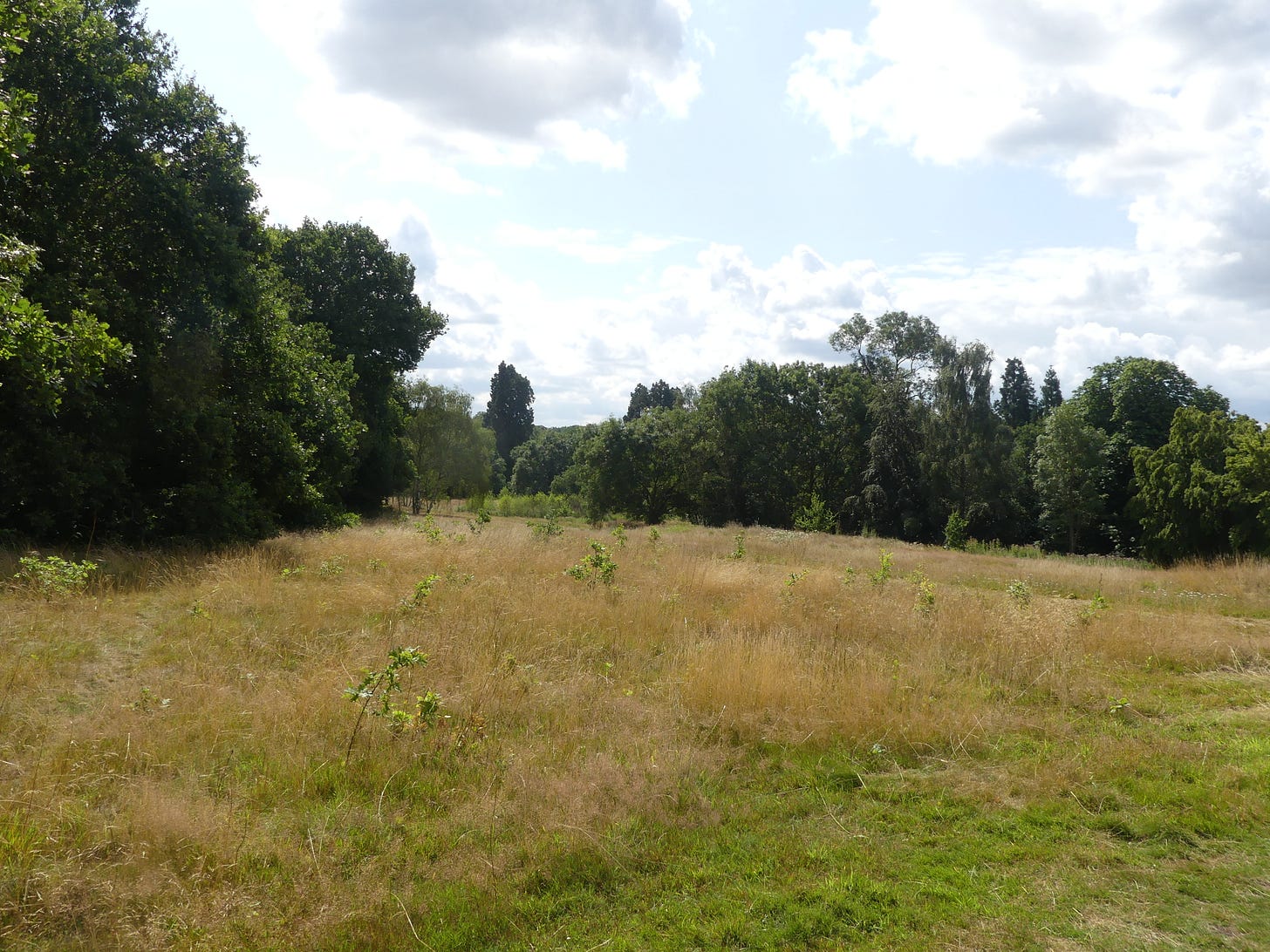A Tale of Two City Parks
From Wimbledon to Whitewebbs: what happens when a multimillion-pound sporting organisation takes ownership of your local park? Spoiler alert: nothing good
“It was the best of times, it was the worst of times, it was the age of wisdom, it was the age of foolishness, it was the epoch of belief, it was the epoch of incredulity, it was the season of Light, it was the season of Darkness, it was the spring of hope, it was the winter of despair, we had everything before us, we had nothing before us, we were all going direct to heaven, we were all going direct the other way.”
Charles Dickens, ‘A Tale of Two Cities’

Chapter 1: The Wobbles of Wimbledon
Wimbledon, southwest London. One of the wealthiest pockets within one of the wealthiest cities on the planet. Home, most famously, to the eponymous annual tennis championships, and the all-white sportswear and jolly jugs of Pimm’s and punnets of strawberries and cream that accompany it.
People like tennis. In fact, they love tennis, in particular Wimbledon, and they’re prepared to pay premium prices to attend the most prestigious tournament in the grand slam calendar. As a result, the All England Lawn Tennis & Croquet Club [AELTC], which hosts and effectively owns the Wimbledon tournament, is doing pretty well for itself thank you very much, financially speaking.
And what do you do when you’re a profit-making enterprise making plenty of profit? You expand. And conveniently for the All England Club, they happen to control the lease for the perfect place to expand into: the directly adjacent Wimbledon Park.
Originally laid out in 1764 by the god daddy of landscape design, Capability Brown, the bulk of the parkland these days serves as a public golf course, along with a cricket pitch, athletics track, beach volleyball facilities, and municipal tennis courts. A sporting hub for the community, all contained within a beautiful, tree-filled, Grade II-listed park.
The park is a literal breath of fresh air in the Big Smoke. A newspaper article published soon after Capability Brown completed work on the then-private estate reported: “The grounds about the Lord Spencer’s place at Wimbledon are perhaps as beautiful as anything near London. Nature has done much of it and Brown made it much more.” And in the centuries since, now-public Wimbledon Park has served as a restorative, therapeutic green haven for generations of Londoners living within the great grey metropolis.
In 1993, the All England Club acquired the freehold of Wimbledon Park’s golf course from Merton Borough Council. In doing so, it agreed “not to use the [land] other than for leisure or recreational purposes or as an open space.” Well, what could be more leisurely and recreational than a private facility for elite-level tennis?
And so it came to pass that last month, the Labour-led Merton Council approved the AELTC's plans to redevelop the park, expanding the All England Club’s footprint from its already impressive 17 hectare site to an almost-three-times-the-size 46 hectares. The jewel in the crown of the proposal – which also included plans to add more than 9km of roads, 10 maintenance hubs and 38 new grass courts – would be a nine-storey, 8,000-seat stadium, which in turn would free up space to build new corporate hospitality suites on existing AELTC land.

So, has the time come for local residents to kiss goodbye to this treasured patch of publicly accessible inner city parkland? Is this the end for Wimbledon Park, as we know it?
Not so fast, All England Club! For there is a twist in this tale, a Deus ex Machina in the form of an unlikely assemblage of heroes: the Conservative-led Wandsworth Borough Council. For as it happens, a small corner of Wimbledon Park overlaps into neighbouring Wandsworth, and thus the AELTC’s plans require the approval of both borough councils before any construction can begin.
And earlier this week, Wandsworth council’s planning committee listened to the pleas of local residents, voting unanimously to reject the AELTC’s proposals, concluding that the plans amounted to the creation of “an industrial tennis complex” and would “cause substantial harm to the openness of metropolitan open land”.
Never underestimate the power of phrases like “Grade II-listed” and “Capability Brown-designed” to tug at the heartstrings of a Tory. Without these labels, without this heritage, things could easily have gone south for the park and its users.
The battle to keep this green space out of the hands of Big Tennis is far from over – the ball is now in the Mayor of London’s court. But for the time being, at least, it looks like it is advantage: Capability Brown and the residents of Wimbledon.

Chapter 2: Enfield of Dreams
Enfield, northeast London. One of the least fashionable pockets within one of the most glamorous cities on the planet. Home, not at all famously, to Capel Manor College, where this very Earthworm was awarded his Level 2 horticulture qualification; and slightly more famously to the training ground for Premier League stalwarts Tottenham Hotspur Football Club [THFC].
People like football. In fact, they love football, even more than they love tennis, and they’re prepared to pay premium prices to support one of the most well known clubs playing in the most prestigious league in the world. As a result, THFC is doing pretty well for itself thank you very much, financially speaking.
And what do you do when you’re a profit-making enterprise making plenty of profit? You expand. And conveniently for Spurs, they happen to hold the lease for the perfect place to expand into: the directly adjacent Whitewebbs Park.
In so far as anyone may have heard of Whitewebbs, it is likely to be only in the context of the Gunpowder Plot. It’s thought that Guy Fawkes and his explosively minded mates met under the cover of darkness inside the forest-shrouded home at the centre of the Whitewebbs estate. (For lovers of history and/or buffet-style roast dinners, you can enjoy Whitewebbs House in its current guise as a Toby Carvery.)
In the 1930s, a large chunk of Whitewebbs was converted into a municipal golf course, and so it remained for the bulk of the intervening decades. But not for much longer.

This summer, Enfield Council agreed to lease a 150-acre portion of Whitewebbs – more than half of the total area of the park – to their wealthiest residents. No, not Capel Manor land college, but Tottenham Hotspur FC.
Spurs’ stated intention is to transform the golf course into a women’s and girls’ training academy. So far, so noble, for fans of sporting equitability and the furthering of opportunities for female footballers. Unfortunately, however, rather than repurpose any of their existing state-of-the-art facilities to this end, or purchase any privately owned land (at a significantly higher cost than the £2 million they are reported to have secured Whitewebbs for), they have chosen to take over and fence off a much-loved and invaluable community resource.
And Enfield Council are absolutely fine with that. (The actual planning permission proposal is yet to be submitted, and could still be rejected, though this seems unlikely given that the people in whose power this decision will lie are the same ones that granted Spurs the lease in the first place.)
Local groups, led by the Friends of Whitewebbs, are campaigning tirelessly to block Spurs’ ambitions to replace one of London’s most important – albeit least well known – wildlife hotspots with acres and acres of planet-warming, plastic-leaching, biodiversity-annihilating astroturf.
As a recent social media post from the Friends of Whitewebbs explains, “The Whitewebbs park itself has everything you would want out of a wild space: meadows, old trees, decaying trees, young trees, ponds, streams, ephemeral wetlands, short grass, long grass PLUS man-made golf bunkers (bare sand is a relatively uncommon special habitat for London), paths and other surprisingly biodiverse features… all of these ensure it has hundreds of species of plants and animals – some of them nationally scarce.”
It is unthinkable that all of this, in our already nature-depleted city, in our already nature-depleted country, on our already nature-depleted planet, could soon be flattened, destined to disappear beneath a green plastic carpet.

Epilogue
This is the reality of the world in which we live, where “value to the local economy” (a questionable claim in the examples of Wimbledon and Whitewebbs) is awarded greater significance than value to people, plants and planet.
Those of us who live in cities – even the ones, like me, fortunate enough to have a garden of their own – have extremely limited opportunities to experience or interact with the natural world. Millions of Londoners have no meaningful access to nature whatsoever.
Our parks, in this respect, are our lifelines. And that’s before you even consider their role in cleaning the air we breathe, cooling the concrete furnaces we inhabit, and providing food and shelter for the poor wildlife trying to scrape a living in our wake.
The All England Club and Tottenham Hotspur FC, a couple of the most monied and powerful sporting organisations on Earth, have demonstrated that they have not a shred of respect for the communities or the wider environments in which they operate. They appear to be content to cut their neighbours off from the greenery (and, ironically, sporting facilities) that they so depend on. And these sports mega-corps are far from acting alone.
According to the Campaign to Protect Rural England, as of March 2022 there were 50 cases in London alone of local groups taking councils and developers to court to protect precious green spaces. What hope any of them has of succeeding, I can’t honestly say. All I know for certain is that they must.




Thank you for sharing, these are important stories!
There's something about how when organisations accumulate capital they need to put it somewhere and often that means putting into ecologically devastating projects like these. It's built into the nature of capital that it has to expand like this.
Apart from the courts, and petitions, what other kinds of resistance are available to us? And what would it mean to transform the logic of the economic system that insists on organisations like this expanding to survive?
I am so riled! And i live in Australia!
Simply because it's the same here - money and development ahead of the environment. My blood pressure rises in consequence. I wish all those who are battling to save green space the best of luck. Governments never listen.